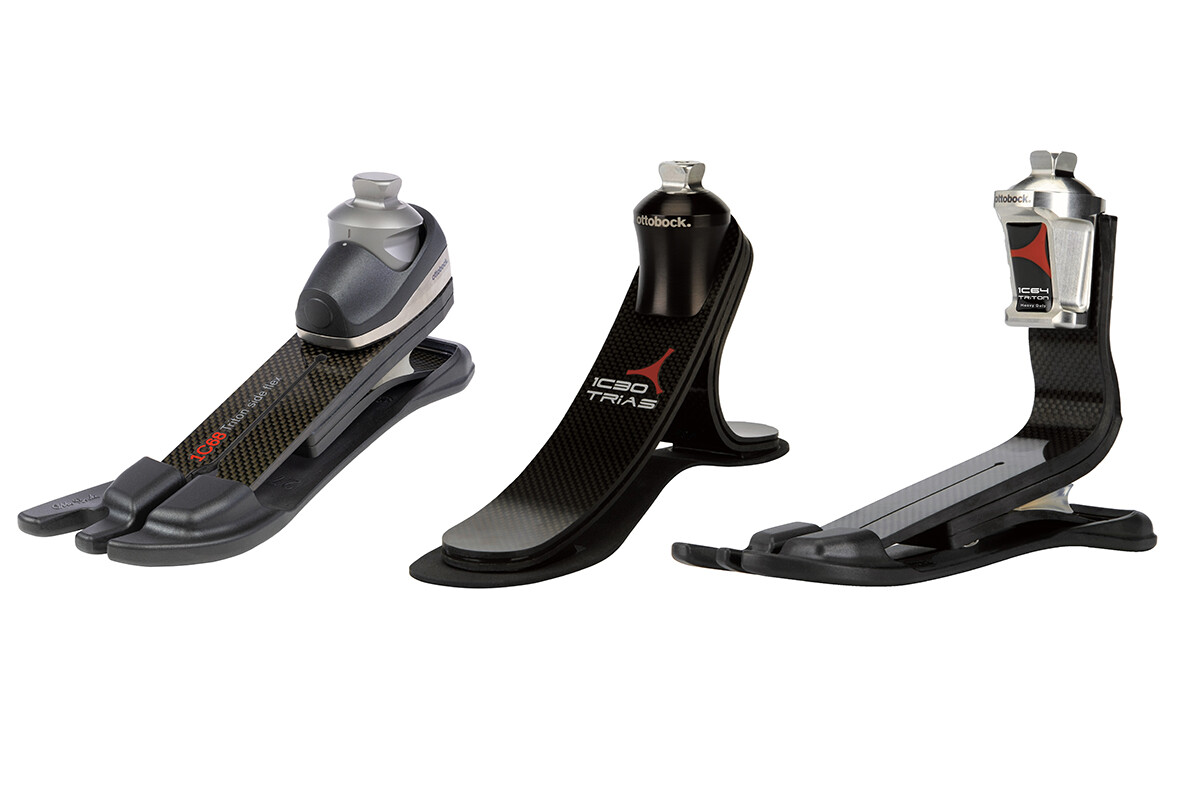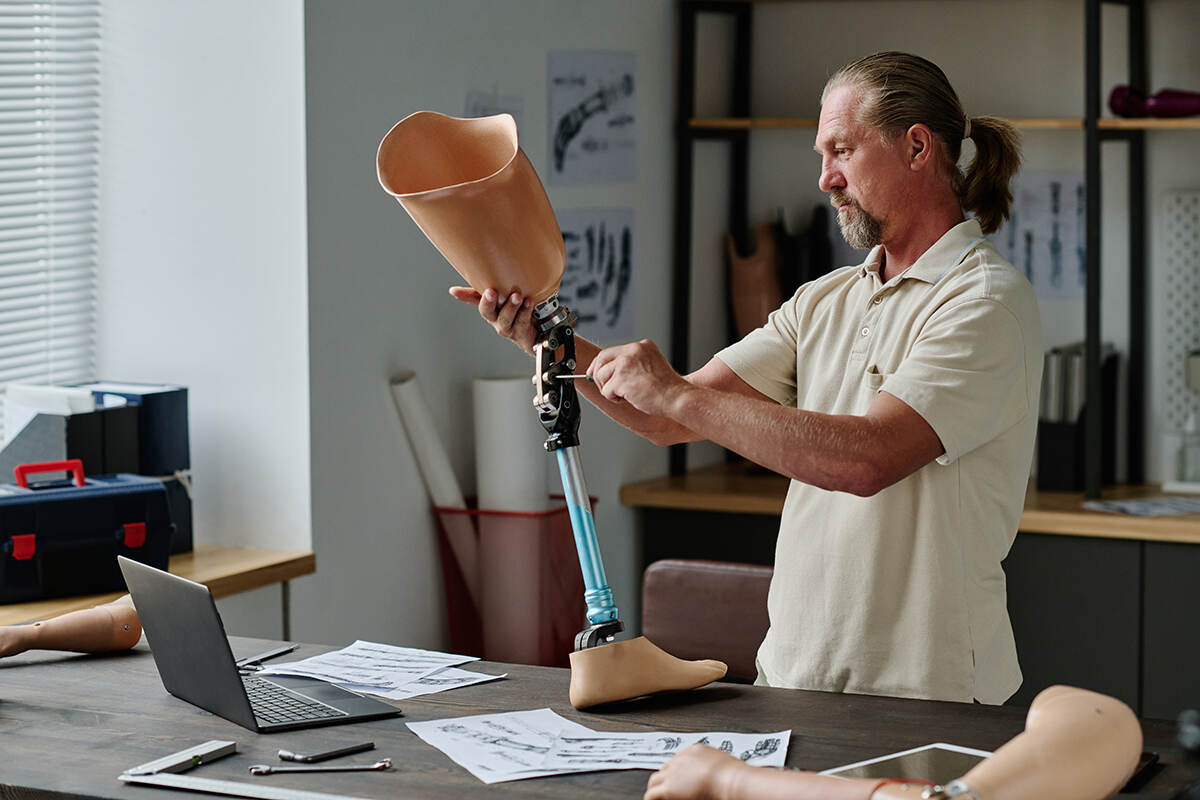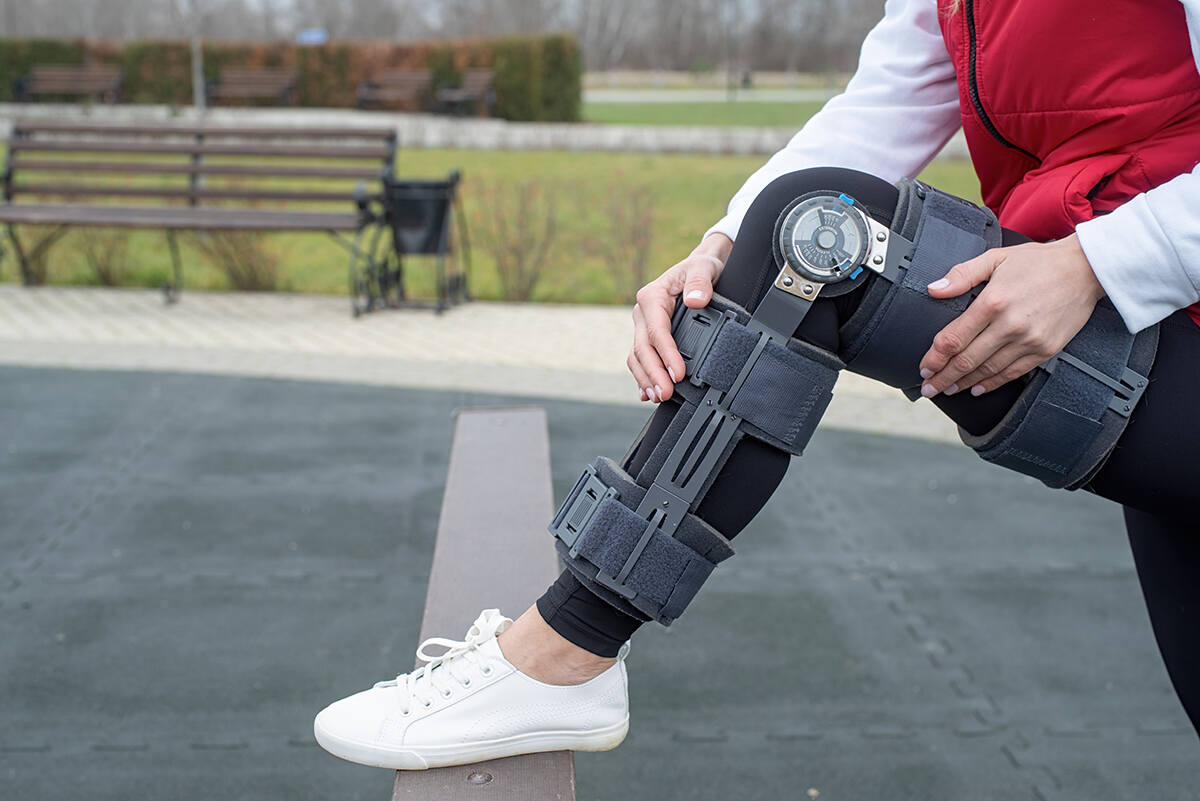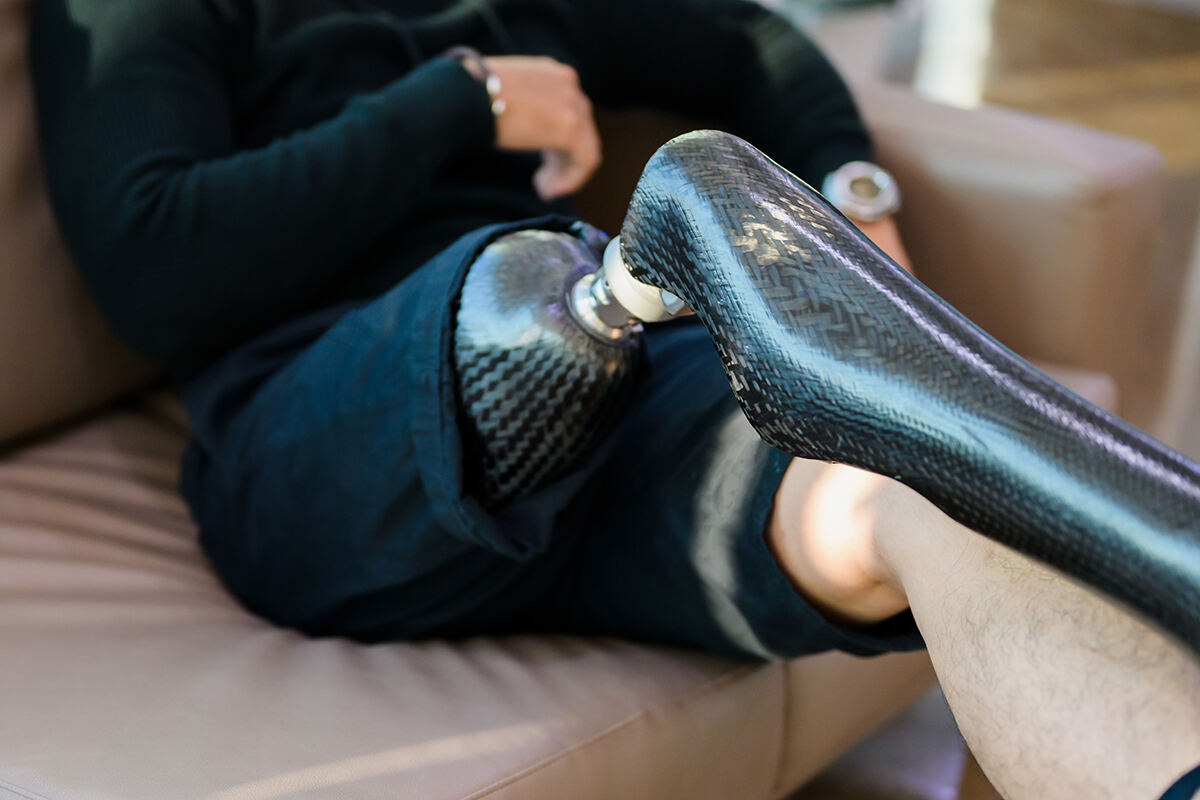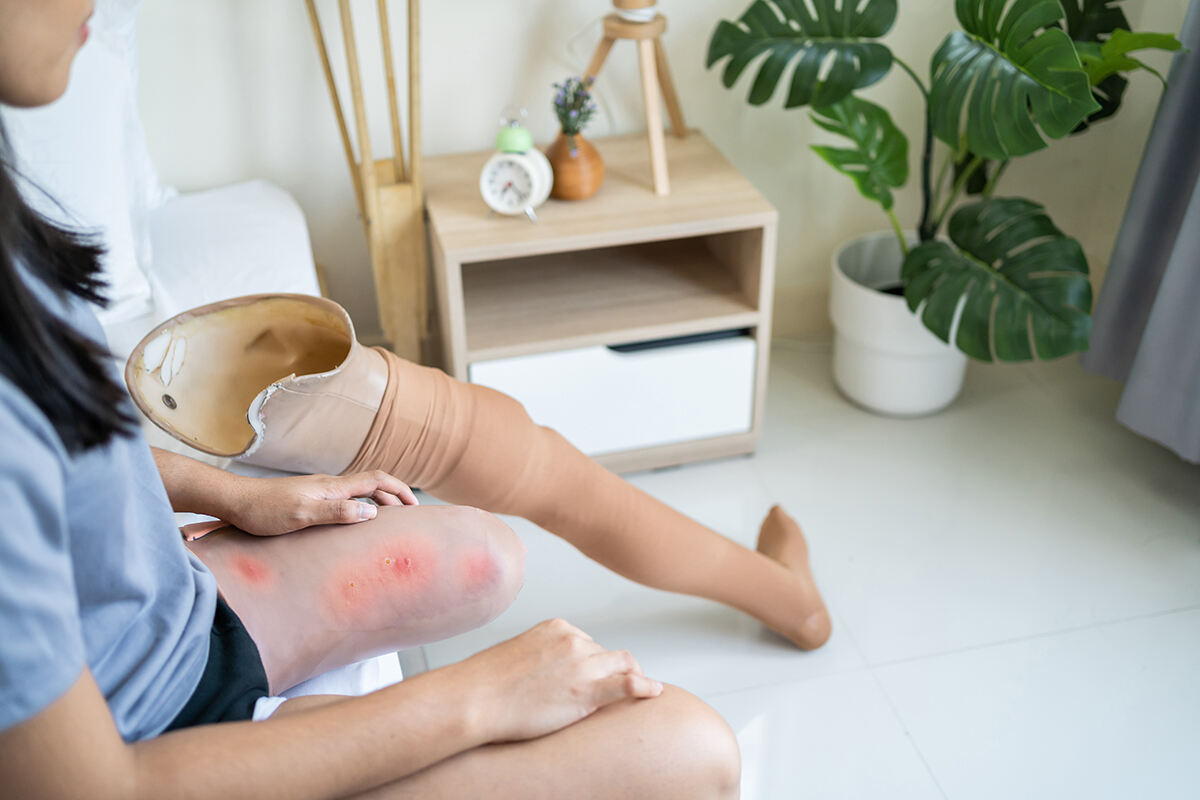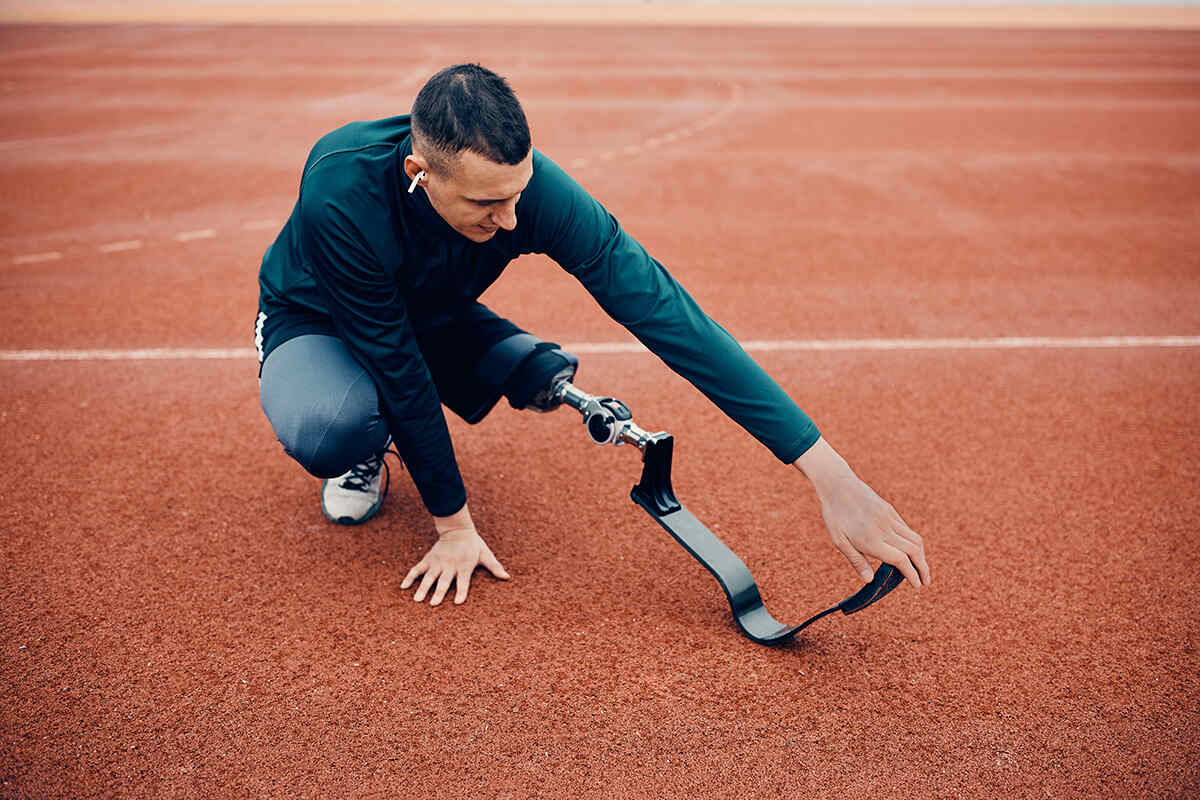When it comes to prosthesis choices, the vacuum socket prosthesis stands out for enhancing amputee mobility. This article cuts straight to the chase: how does the vacuum socket prosthesis work, and why is it considered by some a superior option for amputees? By applying negative pressure for a precision fit, it reduces limb movement and skin damage, markedly improving the wearer’s comfort and stability. We’ll unpack the specifics of this technology, its advantages, fitting process, and what amputees have to say about their experiences.
Key Takeaways
- Vacuum socket technology provides enhanced fit and comfort for amputees by applying uniform negative pressure and reducing intra-socket movement, which is beneficial for skin health and consistent limb volume.
- The stability and secure suspension of the vacuum socket prosthesis improve gait and balance, and the adaptability of the system allows for personalized fit and dynamic adjustments to accommodate limb volume fluctuations.
- Maintenance and regular care are crucial for the longevity of vacuum socket prostheses, and the transition to using one involves a detailed evaluation, fitting, and training to ensure optimal use and adaptation.
Exploring Vacuum Socket Technology

Vacuum socket technology is an innovative prosthetic suspension system that has reshaped the landscape of prosthetics. Offering a superior level of self-reported socket fit comfort compared to suction or sleeve sockets, the technology applies uniform negative pressure across the entire limb surface. This results in an enhanced and more comfortable fit, making it a valuable advancement in lower limb prosthetic sockets, especially for amputees who have undergone amputations due to conditions like peripheral vascular disease (PVD) or diabetes.
The Mechanics of Elevated Vacuum Systems
Elevated vacuum systems in prosthetics consist of a liner that fits over the residual limb, a sealing sleeve, and a vacuum pump. The pump has a significant part in this arrangement, removing air to create a negative pressure environment. This action pulls the liner and residual limb tissues to the socket wall, effectively limiting movement and providing a secure fit.
The vacuum within the prosthetic socket is generated actively through the use of a pump. The pump removes the air between the liner and the socket wall, establishing a negative pressure environment within the socket. This negative pressure is instrumental in confirming a secure fit by solidly fixing the socket to the limb. It limits intra-socket motion and pistoning while applying a steady force less disruptive to potential wound healing.
The use of negative pressure in vacuum socket prostheses offers several benefits:
- Reduces movement within the socket by securely maintaining the liner against the socket wall
- Prevents pistoning, which is the vertical movement of the limb within the socket during activities such as walking
- Ensures a secure, comfortable, and consistent fit
- Enhances user comfort and minimizes the likelihood of skin damage
Benefits for Skin Health and Limb Volume
In addition to providing a secure and comfortable fit, vacuum socket prostheses also offer significant benefits for skin health. They:
- Optimize balance, physical capability, prosthetic pistoning, and residual limb health
- Mitigate residual limb volume fluctuations throughout the day
- Reduce the risk of soft-tissue injuries
- Enhance comfort
- Promote overall limb health
Vacuum socket prostheses are also instrumental in preserving limb volume. By increasing limb volume if the socket is sufficiently large, reducing daily limb volume changes, and ensuring a proper prosthesis fit, vacuum socket prostheses contribute to the overall comfort and functionality of the prosthesis.
In essence, vacuum socket prostheses:
- Promote skin health
- Help maintain consistent limb volume
- Reduce discomfort
- Improve overall function
- Significantly enhance the daily life and mobility of amputees.
Optimizing Fit: The Role of Negative Pressure
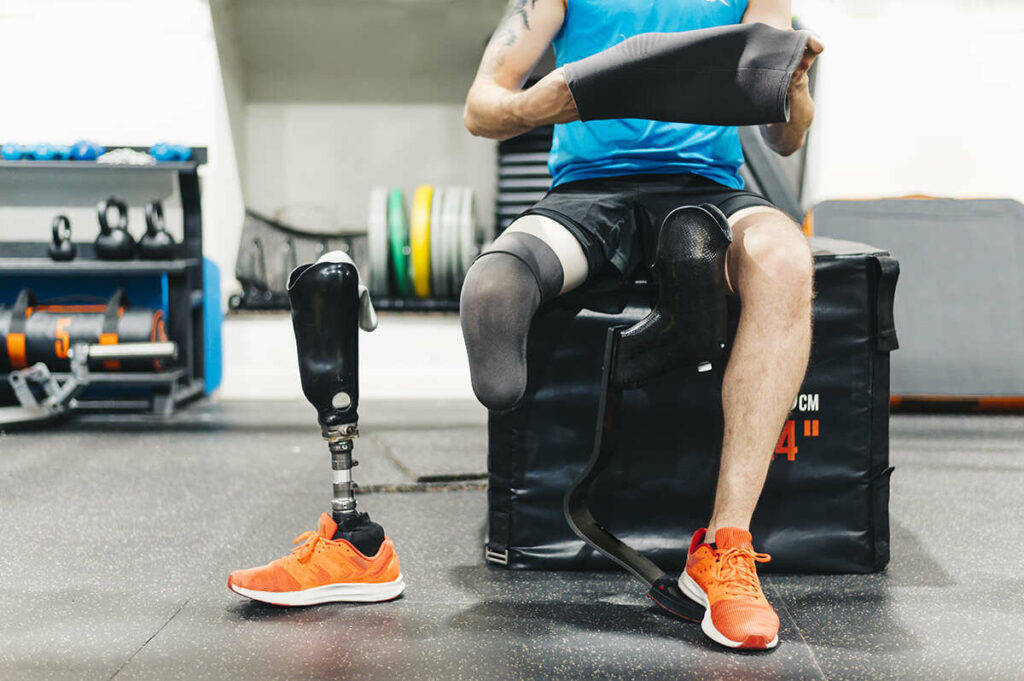
Negative pressure is crucial in enhancing the fit of vacuum socket prostheses. It provides the following benefits for amputees:
- Ensures a secure suspension
- Minimizes daily volume changes in the residual limb
- Promotes a stable interface between the limb and the prosthesis
- Enhances comfort and stability
- Improves stability of the prosthesis
- Results in enhanced gait, balance, and overall user satisfaction
Socket Comfort and Reduced Movement
The comfort and fit of a prosthesis are pivotal for the user, and vacuum socket prostheses excel in these aspects. Active vacuum suspension systems and increased socket vacuum pressure are key factors that minimize movement within the socket. This improvement in user comfort is achieved by reducing the relative motion between the limb and prosthesis.
A vacuum socket secures a better fit by employing negative pressure. By drawing the liner and residual limb tissues towards the socket wall, the technology effectively reduces limb movement and shear forces. This serves to safeguard the skin and diminish the likelihood of potential damage.
Excessive movement, particularly for individuals with trans-femoral amputations, can result in inefficient dynamic loads, leading to discomfort and potentially contributing to prosthesis abandonment. Therefore, limiting movement within the socket significantly enhances comfort.
Addressing Residual Limb Volume Changes
Changes in residual limb volume can greatly affect the correct fit of a prosthesis, possibly causing problems like gait instability and skin irritation. Vacuum socket prostheses address these changes effectively by preserving a precise and comfortable fit, ensuring consistency throughout the day or over extended periods, thus promoting residual limb skin health.
Vacuum socket prostheses employ various mechanisms to accommodate changes in limb volume. By manually tightening or releasing using a dial button, clamps, or lacing system, these adjustments ensure a snug and comfortable fit for the prosthesis.
Maintaining a consistent fit in a prosthesis facilitates increased prosthesis use, improves self-care and mobility, and mitigates problems related to an ill-fitting prosthesis. This stability contributes to enhancing overall functioning for the user.
Vacuum Suspension Versus Other Methods
While vacuum suspension systems have transformed prosthetics, it’s vital to comprehend their comparison with other suspension methods. Two of the most common alternatives to vacuum suspension are suction suspension systems and total surface bearing sockets. Each has its unique characteristics, and understanding these differences can help users make informed decisions about the best prosthesis for their needs.
Suction Suspension Systems
Suction suspension systems in prosthetics ensure a secure fit by generating negative pressure during the swing phase of gait. This effectively secures the prosthesis to the residual limb through a socket, thus maintaining a firm hold. However, suction suspension systems are generally considered less comfortable than vacuum suspension systems, which are another type of prosthetic suspension systems.
The adaptability of suction suspension systems encompasses a reduced range of motion at the knee, potential need for daily changing and maintenance, and the risk of injury due to improper use. Inadequate suspension may lead to discomfort, instability, and diminished mobility, highlighting the superiority of elevated vacuum suspension systems in terms of comfort and adaptability compared to traditional vacuum suspension.
In suction suspension systems, the prosthesis is removed by opening or pushing on the suction valve, which allows air to return and breaks the seal, releasing the residuum. This process is different from vacuum suspension systems that utilize an actively controlled pump to generate a negative pressure for a secure and comfortable fit.
Total Surface Bearing Sockets
Total surface bearing sockets in prosthetics distribute forces across the entire residual limb, offering weight-bearing support and comfort. However, these sockets rely on friction for suspension, whereas vacuum sockets provide a more secure and comfortable fit using negative pressure.
Friction-based suspension in total surface bearing sockets operates by establishing a strong adhesion or friction between the stump and the silicon liner, enabling weight bearing across the entire surface of the stump. Despite this, many users still prefer vacuum sockets due to the benefits of:
- Physiological weight-bearing
- Enhanced mobility
- Decreased pistoning
- Improved circulation and proprioception.
In conclusion, while total surface bearing sockets and suction suspension systems provide secure fits, vacuum suspension systems offer distinct advantages in terms of comfort, stability, and adjustability. Understanding these differences can guide prosthetic users in making informed choices about the best suspension method for their individual needs.
Customization and Adaptability
One of the prime benefits of vacuum socket prostheses is their adaptability and customization according to individual needs and preferences. Vacuum socket prostheses can be tailored to suit the individual’s residual limb shape and size, and the elevated vacuum pressure can be fine-tuned to meet the user’s suspension and activity requirements.
This high degree of customization and adaptability enhances the overall functionality and user experience of the prosthesis.
Dynamic Vacuum Adjustment
Dynamic vacuum adjustment, an exclusive feature of vacuum socket prostheses, allows users to:
- Precisely adjust the negative pressure level in their prosthesis
- Utilize a pump to remove air between the liner and the socket wall, generating a negative pressure environment
- Improve suspension and regulate limb volume, enhancing user comfort
- Minimize the likelihood of skin damage
Dynamic vacuum adjustment provides various advantages, including:
- Improved prosthesis suspension
- Better limb volume management
- Minimized movement between the limb and socket
- Enhanced connection between the prosthetic limb and the user’s body for more natural movement
This level of control empowers users to personalize the pressure according to their requirements, significantly enhancing their comfort and mobility.
Despite these advantages, dynamic vacuum adjustment may present challenges, including:
- Issues related to thermal bridging
- Condensation
- Service life
- Economic feasibility
An increase in residual limb volume could result in elevated socket pressures that impede blood circulation. However, these potential challenges are offset by the numerous benefits that dynamic vacuum adjustment offers to users.
Prosthetic Components Compatibility
The interoperability of vacuum socket prostheses with different prosthetic components considerably boosts their functionality. Typical components utilized are:
- The Harmony system
- The Harmony P3 vacuum volume management system
- Sleeves constructed from neoprene, silicone, or copolymer gel
- Connecting components made of aluminium, stainless steel, or titanium.
The compatibility of these components with vacuum socket prostheses can:
- Improve balance
- Improve gait
- Improve transfers
- Reduce pressure on the limb
- Increase circulation
- Improve proprioception
This greatly enhances the overall functionality and user experience of the prosthesis, providing a personalized and versatile solution for a wide range of users.
The compatibility of prosthetic components with vacuum socket prostheses is influenced by various factors such as:
- Fit
- Alignment
- Residual limb volume fluctuation
- Distal displacement
- Limb length
- Proximomedial tissue density
- Mediolateral pelvis and trunk stability
Understanding these factors can help practitioners customize the prosthesis to meet the unique needs and preferences of each user.
Clinical Outcomes and User Experiences

Clinical studies and user experiences have yielded positive feedback on the usage of vacuum socket prostheses. These prostheses have been shown to:
- Improve gait
- Enhance mobility
- Increase overall quality of life
- Provide a more secure and comfortable fit
This section will discuss these outcomes in detail, highlighting the impact on gait and mobility, and sharing personal stories of how these prostheses have enhanced the quality of life for amputees.
Impact on Gait and Mobility
Vacuum socket prostheses offer numerous biomechanical advantages, including:
- Diminished pistoning
- Minimized soft-tissue injuries
- Heightened proprioception
- Improved socket comfort
- Enhanced suspension with superior limb volume management
These factors collectively contribute to a more natural walking pattern and enhanced control over the prosthesis, significantly improving the gait and mobility of users.
Amputees, particularly those with lower limb amputation, typically experience increased energy expenditure of 10-40% during walking compared to able-bodied individuals. However, the enhanced fit and stability offered by a vacuum socket prosthesis can contribute to improved energy efficiency during walking, making physical activities less strenuous for the user.
The enhanced balance, gait, and transfers provided by a vacuum socket prosthesis empower users to navigate daily activities with increased confidence and security. This not only promotes their independence but also positively impacts their overall quality of life. Vacuum socket prostheses offer the following benefits for amputees:
- Increased stability and balance
- Improved gait and walking ability
- Enhanced comfort and fit
- Reduced risk of skin irritation and pressure sores
- Greater control and proprioception
These benefits make vacuum socket prostheses a highly beneficial solution according to some.
Personal Stories of Enhanced Quality of Life
Amputees who have transitioned to vacuum socket prostheses have reported significant benefits, including:
- Improved balance
- Improved gait
- Improved transfers
- Improved physical capability
- Reduced fluctuations in limb volume during walking
These improvements have greatly enhanced their quality of life, demonstrating the transformative potential of vacuum socket prostheses.
Vacuum socket technology not only improves the physiological aspects of an amputee’s life but also enhances their overall quality of life by increasing satisfaction with the prosthesis. The secure and comfortable fit provided by vacuum, along with the improved gait and balance, contributes to a more active and fulfilling lifestyle for users.
Personal accounts from individuals who have experienced remarkable progress after using the vacuum socket prosthesis further underscore its benefits. For instance, an individual who achieved a successful recovery after a devastating motorcycle accident attributed his progress to the benefits of the vacuum socket prosthesis. Similarly, another patient reported substantial enhancements in mobility and overall quality of life after receiving an above-knee prosthesis. These personal stories highlight the life-changing impact that vacuum socket prostheses can have on amputees.
Maintenance and Care
Appropriate maintenance and care are vital to guarantee the durability and performance of the prostheses. Regular cleaning, inspection, and servicing can help prevent issues and prolong the life of the prosthesis.
This section provides detailed guidance on how to maintain and care for vacuum socket prostheses, ensuring their optimal performance and longevity.
Ensuring Longevity of the Vacuum System
The suggested maintenance procedures for a vacuum socket prosthesis involve:
- Weekly hand washing of the suspension sleeves
- Using a damp, soapy cloth to wipe the inside of the socket
- Cleaning thermoplastic sockets and liners with lukewarm water and mild soap
- Examining the prosthesis daily for any loose parts or damage
- Vacuuming the adapter of the pin system once a week
These routine care practices can significantly enhance the longevity of the vacuum system.
Maintaining a vacuum socket prosthesis isn’t a one-off task but rather a regular routine. Regular inspection and cleaning are recommended every day or every other day to maintain the longevity and proper function of the prosthesis. By following these maintenance guidelines, users can ensure that their prosthesis continues to function optimally and provide a comfortable and secure fit.
Moreover, it’s important to remember that even with the best care and maintenance, parts of the prosthesis may still wear out over time. Therefore, the prosthesis should be professionally serviced or checked every six months to address any potential issues and ensure its proper functionality.
Troubleshooting Common Issues
Despite the best care and maintenance, issues may occasionally arise. Indications of a malfunctioning vacuum socket prosthesis may manifest as a loose socket caused by changes in the residual limb, or issues with the suction valve or vacuum pump.
Leaks in vacuum socket systems are frequently attributed to leaks at joints to components such as pump lines, chamber doors, and electrical leadthroughs. Over time, seals can become brittle and develop leaks. Therefore, regularly checking for leaks and addressing them promptly can prevent further issues and ensure the optimal performance of the prosthesis.
Loss of suction in vacuum socket prostheses can be caused by a variety of factors, including:
- A clogged one-way suction valve
- Weight change
- The back brim being too wide
- Unsuccessful donning of the prosthesis
- Mechanical problems such as loss of suspension or malfunctioning suction valves or vacuum pumps
By understanding these potential issues and how to address them, users can ensure that their prosthesis continues to provide a comfortable and secure fit.
Transitioning to Vacuum Socket Prosthesis
Switching to a vacuum socket prosthesis involves a comprehensive evaluation, fitting process, and adjustment period. A comprehensive understanding of the crucial components of the prosthesis, including the socket and the suspension system, is essential during this transition.
This section provides detailed insights into the transition process, helping users understand what to expect when switching to a vacuum socket prosthesis.
Evaluation and Fitting Process
The assessment procedure for fitting a vacuum socket prosthesis involves:
- Selection of an appropriate suspension system
- Evaluation of fit through patient feedback
- Stump sock impressions
- Observations of skin areas for any signs of redness
This comprehensive evaluation ensures that the prosthesis fits securely and comfortably, enhancing the user’s mobility and quality of life.
A prosthetist guarantees a suitable fit for the vacuum socket prosthesis by meticulously analyzing elevated vacuum pressure data to assess the socket fit. This rigorous evaluation ensures that the socket meets the criteria of being secure and comfortable, providing the user with the best possible fit.
Customization is a key aspect of fitting a vacuum socket prosthesis. Factors such as:
- Fit
- Weight
- Heat
- Donning ease
- Suspension quality
- Liner properties
- Air gap distance
- Vacuum pressure
are all taken into account during the customization process. By considering these factors, the prosthesis can be tailored to meet the unique needs and preferences of each user, enhancing their comfort and mobility.
Adaptation and Training
Transitioning to a vacuum socket prosthesis can require some adaptation and training. The recommended training entails:
- Daily sessions lasting 1 to 2 hours
- Allowing individuals to acclimate to utilizing suction or vacuum within the Socket
- This training helps the user become familiar with the prosthesis and learn how to use it effectively.
Acclimating to a new vacuum socket prosthesis may involve:
- Learning to use various suspension methods, such as suction or vacuum
- Incorporating additional components like cuffs or harnesses
- Using sockets that are engineered to secure over the anatomy for enhanced stability, providing users with a secure and comfortable fit.
Adapting to a new prosthesis can take some time and patience. However, with proper training and guidance, users can successfully transition to a vacuum socket prosthesis and experience the numerous benefits it offers.
Summary
In conclusion, a vacuum socket prostheses represent a significant advancement in prosthetic technology, offering amputees a secure and comfortable fit. With numerous benefits such as improved gait, mobility, and overall quality of life, these prostheses have the potential to transform the lives of amputees. Despite the challenges that may arise, with proper maintenance and care, users can maximize the benefits of their vacuum socket prosthesis and lead fulfilling, active lives.
Frequently Asked Questions
How does a vacuum prosthetic work?
A vacuum prosthetic works by using a system to pull air out of the prosthetic socket, creating a consistent negative pressure that pulls the liner and the patient’s limb towards the inner socket wall. This helps with better suspension and comfort.
What is a vacuum socket?
A vacuum socket is a type of prosthetic suspension system that uses negative pressure to secure the connection between the residual limb and the prosthetic socket, providing a more secure and comfortable fit.
What is the difference between suction and vacuum prosthesis?
The main difference between suction and vacuum prosthesis is that vacuum prosthesis prevents limb size changes and aids in fluid circulation, while suction allows fluid to leave the limb but does not aid in fluid return.
What are the benefits of elevated vacuum prosthetics?
Elevated vacuum prosthetics can help prevent and treat skin injuries caused by friction between the skin and the socket. They may also improve balance, physical capability, prosthetic pistoning, fear and risk of falling, residual limb volume, and skin health compared to non-vacuum suspension systems.
What is vacuum socket technology and how does it benefit amputees?
Vacuum socket technology benefits amputees by enhancing circulation, comfort, and mobility, providing a secure and comfortable fit, and promoting skin health. This innovative prosthetic suspension system serves as the primary interface between an amputee’s residual limb and the rest of the prosthesis, contributing to a positive rehabilitation outcome.





